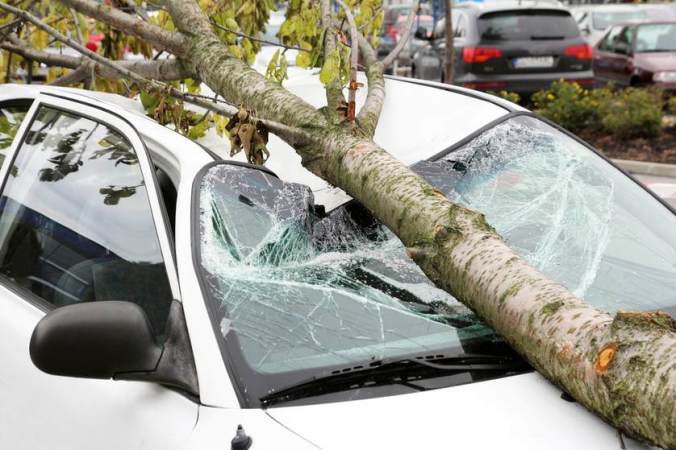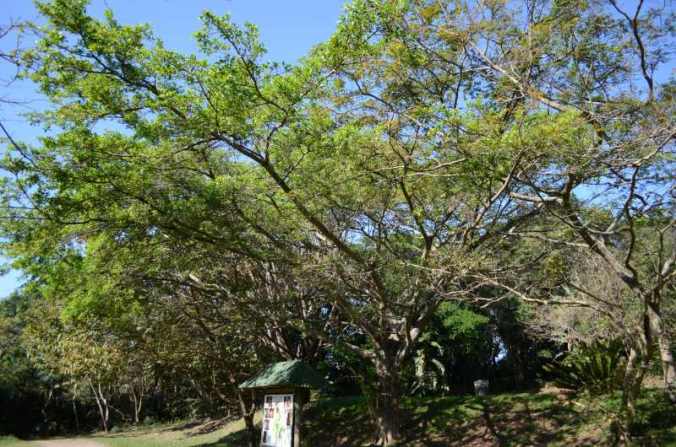Introduction
The purpose of this blog is to conduct various interviews which will be recorded according to photo elicitation that deals with the ideas of Dean who looks at the relationships between people and trees and how these trees depict how people experience the world. The analysis of trees in this blog will be according to the four narratives as outlined by Dean in: The unruly tree: stories from the archives, in Urban forests, trees, and green space: a political ecology perspective.
According to Penny Tinkler (2013), a photo elicitation is a newly introduced concept of conveying a research interview alongside photographs. Images “promote discussion, reflection, and recollection” (Tinkler 2013:174). It is understood that pictures are “studied in their own rights” (Tinkler 2013:274) and the material that accompanies the imagery, aids in bridging ideas and making sense of the work as a collection. Although a photograph could potentially be a hindrance by being a distraction or dominating the focus, a photograph also serves as an icebreaker; as a medium between the interviewee and interviewer, which soothes the atmosphere. Photographs expedite communication and prompt discussion, reflection, and recollection (Tinkler 2013:174). Both parties involved in the interview have a mutual intention to evoke meanings and recognize perspectives from the photograph, which creates a negotiated understanding between them.
The tree as a narrative of service

Figure 1: The beautiful blue gum tree
The first narrative is how trees selflessly provide multiple services to humans and animals; they provide shade and environmental benefits. Trees serve as homes for animals and also clean the air of carbonic acid gas. Humans breathe in pure air because trees take in the carbonic acid gas, distribute the carbon to the building of their substance and return the oxygen to the atmosphere (Dean 2015). As a child growing up on a farm, I developed a love for trees at a young age and what I remember very clearly is the huge blue gum trees that were filled with bird nests and I could sit for ages watching how the birds bring small twigs back and forth, chirping joyfully.
Tracy: My twin sister’s reaction to the above image was exactly what I expected; she immediately recalled the large trees and all the birds as I did. She also reminded me of how we use to climb the trees in order to spy over our older sister. These trees provided us with hours of pleasure and served the purpose of being a home to many birds and other animals/ insects. Tracy also pointed out how we should revisit the farm and plant some more trees because by having many trees in the environment we are encouraging animals to stay and to not be frightened away.
Granny: My grandmother is partially blind but when I asked her if she would like me to conduct an interview with her about trees, she immediately brightened up and starting reaching for her best glasses. Her smile grew as she looked at the picture and told me how without the abundance of the trees on the farm many years ago, she would not have been able to keep he family warm. She told me how she would personally help the farm workers to cut down the trees and use the wood to cook and sell it to neighbouring farms for an extra income. She also noted how she made “kieries” and small wooden tables out of the many different types of wood.
Alleric: I showed my boyfriend the picture as I was telling him about the lovely trees that surrounded me as I was growing up and his initial reaction was “I’m so jealous of you”. Living in the city his entire life he feels deprived of being surrounded by such tranquillity. He did, however, note that he had a swing hanging from one of three trees in his garden growing up, and as an only child he spent a lot of time hanging from the tree entertaining himself.
The tree as a narrative of power and status
Humans have tamed and controlled trees to proclaim human governance over nature (Dean 2015: 163). I realised the effect trees had on indicating class when driving past the houses in Woodhill golf estate, and past townships on the way to Pretoria. Big lush trees surround the glamorous, expensive houses in the estate. They consume plenty of water and almost form an arch over the streets that conjure up the image of a palace or people saluting you. The big trees show magnitude and thus class and power. Whereas there are very, very few trees to be seen in the poor township area.
Tracy: As she just got back from a year au pairing in Amsterdam and traveling at every opportunity, she remembers trees showing class in China, the city was overcrowded and poverty was visible everywhere. When she visited the temples around China she became aware of trees growing there and remembers the grass and trees with tiny little pink flowers planted in rows before the entrance. The temple reminded her of immense richness and holiness. The trees were only at places of importance and showed status.
Granny: My gran spoke lovingly about her childhood growing up in a small village in Cornwall, UK. She explained how her mother taught her and her sisters how to plant trees and work in the garden from a garden from a very young age. And she distinctively remembers her mother’s response when she asked her why they needed to go through so much effort to plant around the house; she said: “Because it makes the house look more beautiful to everyone”. The lusher a garden is, the more attractive the house, and thus, the owners, appear. Clearly, she regarded trees and flowers to carry a lot of status in the community.
Alleric: He did not fully grasp the concept of trees showing class and status at first, but then excitedly suggested that different kinds of wood from various trees varied in value and thus created a class and the people who buy expensive wooden furniture are trying to achieve, or show off, a higher social rank or status. He also pointed out the fact that money is made of paper, which is made by tree bark – which is the ultimate form of power and status. I thought this was a brilliant analogy.
The tree as a narrative of heritage

Figure 4: The magnificent Baobab tree
In this narrative, the beauty of an individual specimen and its associations with human history is emphasized (Dean 2016). The tree is a living symbol of the past. Dean (2015:164) speaks of trees as community landmarks. The Baobab, also known as the Tree of Life, has a remarkable spiritual, medicinal and cultural purpose in Africa. The Baobab is a symbol of perseverance in a harsh landscape and many tales and traditions center around it, which are passed on through generations and make it an African landmark and our cultural inheritance.
Tracy: She mentioned the Sneeze-wood tree in our cousins’ garden. All the neighbourhood friends from the surrounding farms would come over to his house to play hide-and-go-seek. Whoever was picked to seek their hiding friends would have to stand behind the large trunk and count to a certain number. This Sneeze-wood tree became the community favourite, memorialized or the laughs of countless children. The tree is still there today as it has been for over 50 years. It is part of who he was, is and is yet to become.
Granny: She told me that there were numerous arguments in Pretoria about whether the Jacaranda trees should be removed, as it is an invasive species and prevents other plants from growing around them; it was declared that no more Jacaranda trees can be imported or planted. Even though the Jacaranda tree is of South American origin, this tree has become a prominent landmark in Pretoria and so serves as a heritage tree. After thousands of Jacaranda trees lined the streets of Pretoria; Pretoria became known as the Jacaranda city (Henderson 1990). This shows the Jacaranda as a heritage tree as it is associated with a place, and even though the tree is despised by many, its beauty and colours make it a remarkable tree.
Alleric: He immediately recognized the picture of the Baobab tree and recalls the time he spent working in Limpopo. He excitedly told me about the Baobab Tree Bar in Modjadjiskloof, which is a good story of a tree representing our heritage. This tree is the biggest Baobab in the world and its hollow tree trunk has been converted into a bar serving proudly South African beverages. As Baobabs become older their trunks become hollow. This shows how old the tree is, it has been in Limpopo for over 1700 years. His favourite tree is a Baobab tree as it symbolizes Africa.
The counter-narrative of the unruly tree

Figure 5: Sometimes trees can be detrimental
This is in reference to when a tree doesn’t adhere to our human desires or breaks out of our predefined molds. Trees are wild and part of nature; they cannot conform to what we want. Just a month ago my sister and I were waiting for my mom in her car outside our uncle’s house. Above us was a huge tree providing us with shade, moments after arriving a large gush of wind broke off a large branch and it fell straight onto our car leaving a remarkable dent in the roof.
Tracy: Of course her first thought was of the tree branch falling on our mom’s car as well. But she also spoke of how trees are always the ideal place to park under on a hot summer day. At her work, this was the choice instead of in the hot, searing sun. The only problem was when she returned to her car, it was covered in little drops of sticky tree glue. This was a job and a half for her to try remove. Therefore, she believes that this tree is the perfect example of an unruly tree.
Granny: I initially knew what my grandmother would speak about when I explained this narrative to her; when a berry tree almost killed her. In her village in Cornwall, there were trees lined up on her way home from school and she and all the other children were told not to eat the berries or even play in the trees as it would kill them. As a young, rebellious and stubborn 7-year-old girl, she felt jealous when her mother gave birth to a new baby and decided to eat the berries. She was in a coma for 7 months and spent 5 years in and out of a hospital after that. Here, the untruly tree almost cost a young life.
Alleric: He told me that when she was younger there was a tree in their neighbour’s yard which destroyed the foundation of their home. According to him, tree roots can crack cement and concrete and can even cause damages to building foundations if the tree is planted too close to a structure. Invasive tree roots seek nutrients and water; plumbing and sewer pipes draw these roots in for the growth (Grant 2016).
Conclusion
These narratives show that Dean (2016) was right when she referred to trees as symbols. We do not see the wildness of trees anymore; we see how they fit into our Anthropocene. I learned plenty by interviewing people about the matter. It is facile to conclude that interviewing individuals alongside the accompaniment of photographs stimulates a laid-back, conversational environment. The person being interviewed sheds off any unnecessary fear, discomfort, and pressure whilst giving feedback on questions asked. Photographs paint a picture in the minds of the interviewee of what is being asked so that the answer provided come from boxes of memories dusted and relived at this moment.
Check out #DigEcoAction on a variety of different environmental topics and issues of concern.
Also be sure to follow my twitter account: https://twitter.com/KellySkye06 for regular updates!
References
Dean, J. 2015. The unruly tree: stories from the archives, in Urban forests, trees, and greenspace: a political ecology perspective, edited by LA Sandberg, A Bardekjian & S Butt. New York: Routledge: 162-175.
Grant, B. 2016.Tree Root Systems: Learn About Problem Tree Roots.[Online]. Available at:http://www.gardeningknowhow.com/ornamental/trees/tgen/problem-tree-roots.htm
[Accessed: 08/05/2016.]
Henderson, L. 1990. Jacaranda. Farming in South Africa. Pretoria: Department of Agricultural development: 191-192.
Tinkler, P. 2013. Using photographs in social and historical research. London: SAGE.








